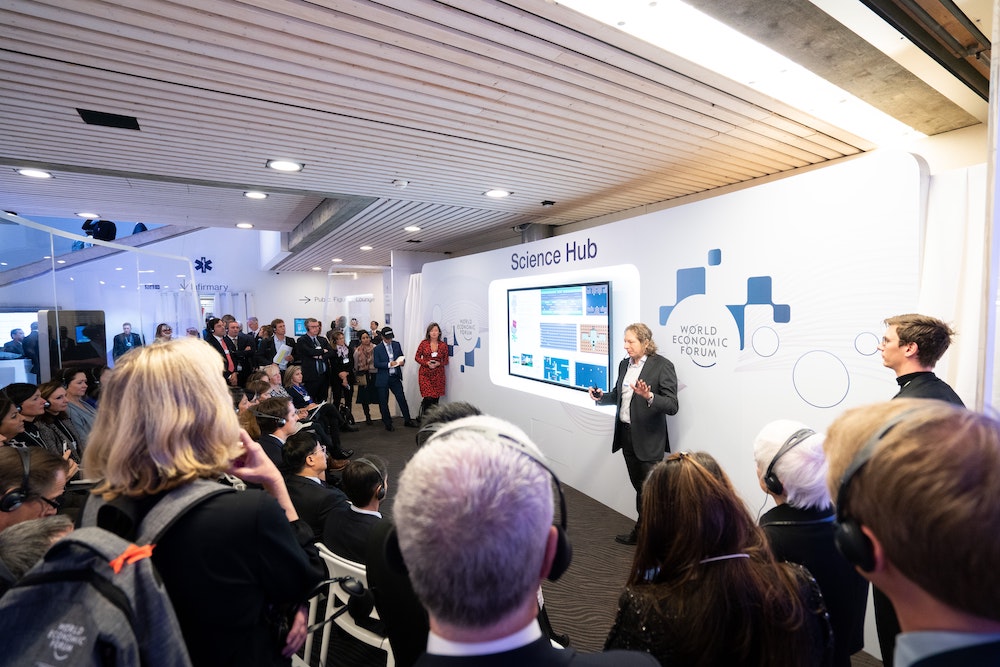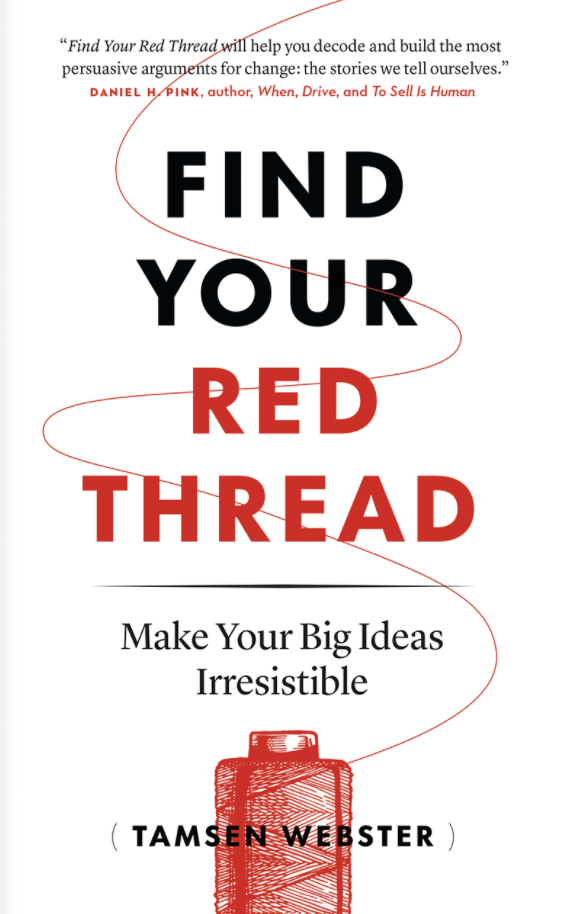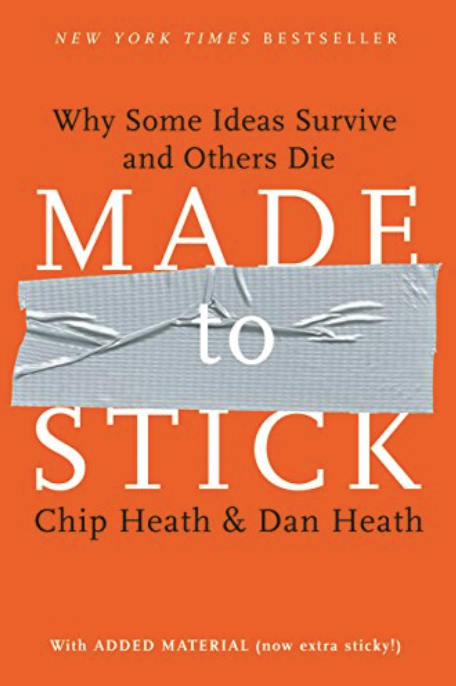Table of Contents
Why Are Stories Such Powerful Tools for Presenters?
Do your ears perk up when you hear the word “story”? Do you feel drawn in when someone tells one?
Stories are primal.
Stories connect us.
Storytelling lets your audience see themselves in the solution you share.
If I had a dollar for every new client that came to me with a business presentation of slides crammed with numbers (and thought that numbers and statistics would convince their audience) … well, I would be a very, very rich woman.
It takes a mind shift to understand that storytelling, and the emotion that stories create, is what actually influences and persuades your audience. Not a data dump. Stories.
Humans Are Hardwired for Stories
Jerome Bruner maintains that facts are up to 22 times more memorable when presented in story form.
Stories are the way the brain works. As Nick Morgan tells us, even when the facts and data attest to one thing-such as that, statistically speaking, flying is safer than driving-we still conjure up that driving is safer. The brain learns though feelings and emotions, not by statistics.

Successful leaders drive their vision by describing where things stand now and painting their picture of where things need to go. Their storytelling is so completely immersive that the narrative transports us. Corporate storytelling which makes us part of the story inspires us to be part of the storyteller’s vision.
What Is the Physiological Effect of Stories?
When we’re immersed in a storyteller’s words, parts of our brain called Broca’s and Wernicke’s areas light up on an MRI. The same areas light up in the storyteller’s mind too, causing the storyteller and receiver to be in sync. Employing a storytelling technique for presentations is a persuasive way to influence an audience.
Think back to a keynote presentation you’ve seen when the speaker delivered slide after slide of bullet points. You were might have followed what the presenter was saying, but you probably didn’t remember much of the content later.
When presenters talk through bullet points on their pitch deck, it only activates the language processing part of the brain. But expand on those bullet points through stories and storytelling, the working memory is activated because the brain encodes it as experiential. It’s through experiences that learning is embedded.
Stories help us make sense of the world around us. Presenters have a magical opportunity to help their audience connect the dots and be part of a group experience of understanding.
“Stories are the single best vehicle we have to transfer our ideas to one another. Stories trigger a release of neurochemicals that force us to pay attention to speakers, empathize with them, understand them, and get excited about their ideas.” (Carmine Gallow, Five Stars: The Communication Secrets to Get from Good to Great, 154)
If you’re lost and unsure about how to make your presentation compelling, I can help.
Which Storytelling Formulas and Templates Can Presenters Use?
As humans we are all innate storytellers. We have it built in us to tell stories, but sometimes it takes some coaxing to retrieve these storytelling presentation skills, and find the story which best illustrates the situation and solution you are trying to drive home. Fortunately, a number of frameworks are available to help you master the art of storytelling.
Nancy Duarte’s “What Is and What Can Be” Framework
While researching her public speaking book Resonate, Nancy Duarte spent years investigating what causes an audience to be engaged. She zeroes in on the ‘what is and what can be’ framework as one uniquely effective at drawing in audiences and compelling them to action. She exemplifies the model with Martin Luther King’s “I Have a Dream” speech.
Tamsen Miller’s Red Thread
Every compelling presentation has a powerful throughline—the conduit and flow of a story, the key point. In her book Find Your Red Thread Miller identifies a 5-part framework:

Goal: Build the story of change people will tell themselves (so you can turn your idea into action, and maybe even change the world).
Problem: For that story to work, it needs to achieve your audience’s goals, not just yours.
Truth: Your idea is an answer. It’s your way of answering a question your audience has about their goal.
Change: Find your audience’s question and tie it to your answer.
Action: Draft the goal statement of your Red Thread.
Every great presentation has a throughline, and Miller’s approach provides an excellent foundation for presentation design which is built on a storytelling framework.
Joseph Campbell’s Hero’s Journey

The best presentations take the audience on a journey. Joseph Campbell’s famous identification of the “Hero’s Journey” keeps people engaged on a familiar pattern that positions the presenter as the guide, and the audience as the hero.
Departure: The hero heads out for the unknown.
Initiation: Through challenges and upheavals the hero learns valuable lessons.
Return: The hero returns, triumphant, as a new person.
Chip and Dan Heath: Telling Stories Which are Made to Stick
Delivering muddy, disjointed ideas loses your audience. Clear and focused concepts, told through compelling stories, are required.
In another one of my favorite public speaking books Made to Stick, the Heath brothers share how to make stories stick in your audience’s mind for years to come through the storytelling techniques of: SUCCESs

Simple: Make it simple. This is one of the most challenging concepts to achieve because as a subject matter expert you likely have forgotten what you have learned on the way to becoming an expert.
It’s the stories that are clear, focussed, and concise that will create lasting memories. Add too much detail and your story will be forgotten.
Unexpected: Humans are comfortable thinking in patterns and connecting the dots. Throw something random your audience’s way and it will long be remembered.
In one of my favourite Ted Talks Tim Urban speaks about procrastination through a personal story. He throws in a few zingers, leading you to believe that he experiences the same amount of procrastination as the next person, but when he was a student he stepped too far into the abyss. His attempt at his senior thesis wasn’t well received. Tim’s story has firmly ‘stuck’ with me, years later.
Concrete: Only sharing abstract ideas is a recipe to have your presentation quickly forgotten. Make your ideas concrete to create sticking power. Dr. Hans Rosling was a master at helping lay audiences understand complex social problems by using easily understandable language. I had the pleasure of watching him present in Doha, Qatar, where he talked about the correlation between religion and population growth.
Here’s one example of a complex idea he presented concretely, to great effect:
“Many think that Afghanistan and Congo, which have suffered severe conflicts, that they don’t have fast population growth. It’s the other way around. In the world today, it’s the countries that have the highest mortality rates that have the fastest population growth. Because the death of a child is compensated by one more child. These countries have six children per woman.”
Dr. Rosling’s research is very clear. He paints a vibrant visual story in our minds. In our mind’s eye we can see war torn communities that lose many of their citizens to conflict and how they rebound by increased birth rates.
Credible: How do you create credibility when you have not established any with your audience? The Heath’s mention a number of ways such as putting forward concepts that are testable and using hard data. True, however having a legacy of work behind you and or proof of successful work is the best way to show your credibility.
Emotional: Stories draw us in through emotion – the connection and feelings that happen when a story is shared. Being carried along on a storyline is the core of and the test of a good story.
Stories: The Heath Brothers put stories apart, as a separate element of stickiness, but I disagree. Stories aren’t separate and exclusive from the Made To Stick concepts, they need to be threaded in and intertwined with concepts in order to be memorable. Stories aren’t just a part of making sticky ideas, storytelling needs to be baked in from the beginning.
Is the Storytelling Style of Presentations Just a Fad?
Stories will never die.
Stories are what connect us and help us understand each other. Storytelling helps make your presentations and speeches memorable.

Don’t shy away from storytelling in your presentations, even personal ones. We are all natural storytellers and have an innate ability to tell them. Take the time to tease out the best stories to support your ideas. It’s worth it.
If you would like help to find the perfect story or stories for your next presentation please get in touch. It would be my pleasure to help you find the stories that will put you in sync with your audience and compel them to action.


